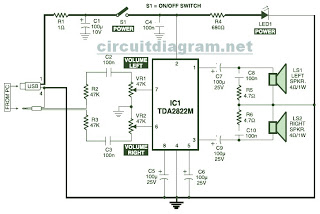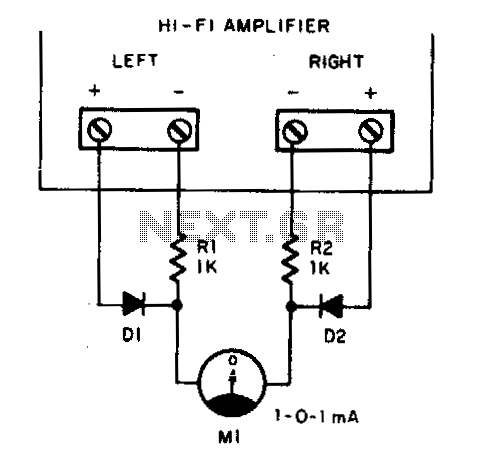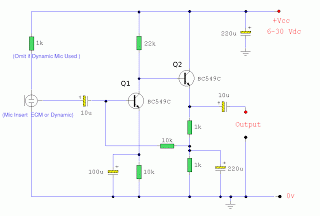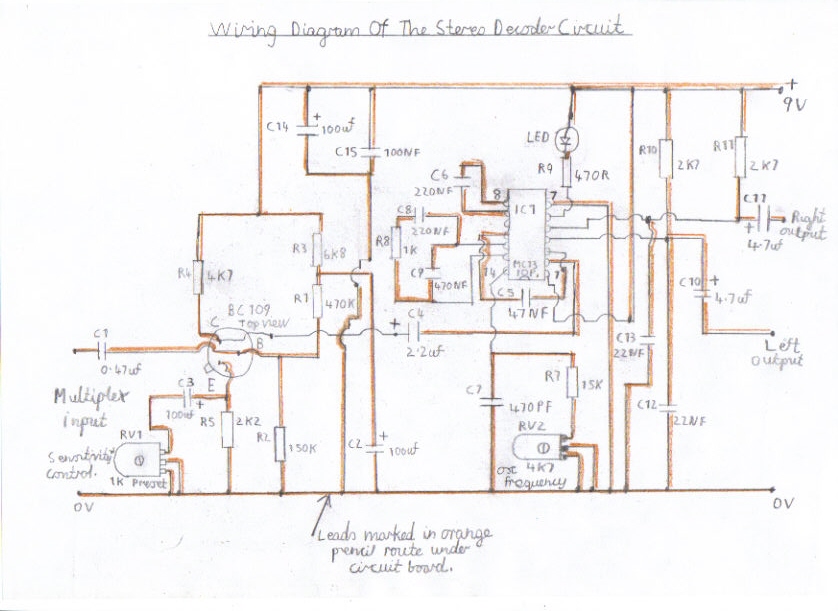
Stereo Preamplifier with Bass-boost
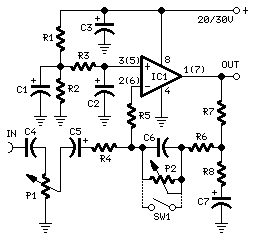
The preamplifier in question is engineered to interface with various audio devices such as CD players, tuners, and tape recorders. Its primary function is to provide an alternating current (AC) voltage gain of 4, an attribute that allows it to effectively drive power amplifiers that have lower sensitivity. This is especially crucial in modern Hi-Fi home equipment setups where the amplifiers may not be as responsive.
A common issue with contemporary Hi-Fi home equipment is the tendency to feature smaller loudspeaker cabinets. While this design choice may offer certain advantages, it often results in the bass frequency range being compromised. To address this issue, the described preamplifier circuit incorporates a bass-boost feature. This additional feature is designed to compensate for the reduced bass frequency range, thereby ensuring a more balanced and fuller audio output.
The bass-boost feature in this circuit is adjustable, providing users with the flexibility to set the bass-boost level according to their preference. This is achieved through the use of a variable resistor, which can adjust the bass-boost from 0 to a maximum of +16dB at 30Hz. This range of adjustment allows for a significant enhancement of the bass output, particularly beneficial for audio content that is rich in low-frequency sounds.
However, if a fixed, maximum boost value is desired, the variable resistor can be bypassed. Instead, a switch can be used to maintain a constant bass-boost level. This option could be particularly useful in situations where a consistent, high-level bass output is required, such as during playback of certain genres of music or during specific audio experiences. This flexibility in controlling the bass-boost level makes the preamplifier versatile and adaptable to a variety of audio setups and user preferences.This preamplifier was designed to cope with CD players, tuners, tape recorders etc., providing an ac voltage gain of 4, in order to drive less sensitive power amplifiers. As modern Hi-Fi home equipment is frequently fitted with small loudspeaker cabinets, the bass frequency range is rather sacrificed.
This circuit features also a bass-boost, in order to overcome this problem. You can use a variable resistor to set the bass-boost from 0 to a maximum of +16dB @ 30Hz. If a fixed, maximum boost value is needed, the variable resistor can be omitted and substituted by a switch. 🔗 External reference
A common issue with contemporary Hi-Fi home equipment is the tendency to feature smaller loudspeaker cabinets. While this design choice may offer certain advantages, it often results in the bass frequency range being compromised. To address this issue, the described preamplifier circuit incorporates a bass-boost feature. This additional feature is designed to compensate for the reduced bass frequency range, thereby ensuring a more balanced and fuller audio output.
The bass-boost feature in this circuit is adjustable, providing users with the flexibility to set the bass-boost level according to their preference. This is achieved through the use of a variable resistor, which can adjust the bass-boost from 0 to a maximum of +16dB at 30Hz. This range of adjustment allows for a significant enhancement of the bass output, particularly beneficial for audio content that is rich in low-frequency sounds.
However, if a fixed, maximum boost value is desired, the variable resistor can be bypassed. Instead, a switch can be used to maintain a constant bass-boost level. This option could be particularly useful in situations where a consistent, high-level bass output is required, such as during playback of certain genres of music or during specific audio experiences. This flexibility in controlling the bass-boost level makes the preamplifier versatile and adaptable to a variety of audio setups and user preferences.This preamplifier was designed to cope with CD players, tuners, tape recorders etc., providing an ac voltage gain of 4, in order to drive less sensitive power amplifiers. As modern Hi-Fi home equipment is frequently fitted with small loudspeaker cabinets, the bass frequency range is rather sacrificed.
This circuit features also a bass-boost, in order to overcome this problem. You can use a variable resistor to set the bass-boost from 0 to a maximum of +16dB @ 30Hz. If a fixed, maximum boost value is needed, the variable resistor can be omitted and substituted by a switch. 🔗 External reference

